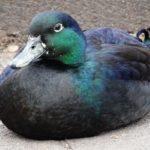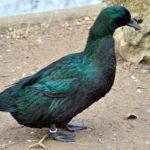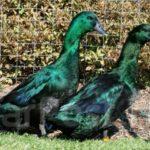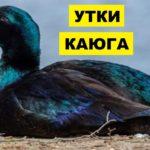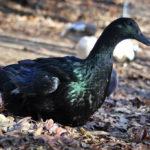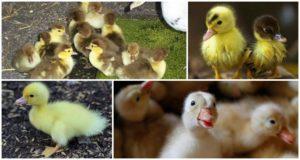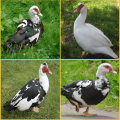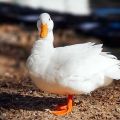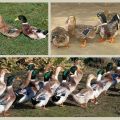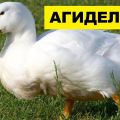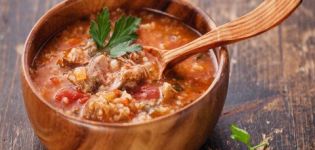Description and characteristics of ducks of the Cayuga breed, the pros and cons of their maintenance
The Cayuga duck is of American origin. Before domestication, she lived in the state of New York. The breed appeared as a result of crossing with local poultry. It is bred to produce diet-flavored meat and eggs. Consider the description and features of the kayuga duck, its pros and cons, how to feed it and how to properly keep it at home, how to breed it.
Description of the kayuga duck
For the first time, the American duck became known in the early 19th century. But they began to breed as a breed only by the 70s of the century. At that time, selection was made among the new population in terms of appearance and weight. The muskrat is immediately recognizable by its characteristic black plumage. Their body is covered with black and green feathers, which makes them shine with a metallic sheen. In bright light, the feather appears black with a blue-green tint. This is especially noticeable on the head and neck feathers.
In female ducks, the greenish tide is less pronounced than in drakes, by this sign they can be distinguished from each other. Another difference is that the male has an olive green beak, while the female has a black beak with a bluish tint. The color of the legs is also black. According to the constitution of the kayuga duck, large birds, according to the constitution, belong to the meat type. The body is long, wide, inclined horizontally. The head is small, elongated. The eyes are brown. The neck is short, curved, the wings are long, the chest is deep, developed.
The meat of the kayugs is not fatty, dietary. An adult drake gains up to 4 kg of weight, ducks - up to 3.5 kg. With intensive fattening, ducklings can be slaughtered when they reach 2 months. This age is due to the fact that molting begins further, and the process of plucking duck carcasses becomes more complicated.
Egg production is sufficient not only for reproduction of offspring, but also for the use of eggs for nutrition. In a year, one duck can lay 100-150 pieces, each weighing 80-100 g. The duck lays eggs with dark shells, which then acquire a greenish tint and become olive.
Habitat of the breed
The duck is a water bird, therefore, even when grown in the yard, it needs a reservoir. The area with a reservoir must be fenced off with a net at least 1 m high so that the birds do not fly over it. At home, the kayugi lived in a temperate climate, so they do not like either heat or cold. This must be taken into account when keeping them at home - ducks need to build or equip a barn in which the temperature will not drop below 5 ˚С in winter.
The floor in the poultry house for ducks should be covered with a layer of straw, sawdust or peat, and in the cold season, the walking area should be insulated with these materials. In summer, the temperature should not exceed 25-30 ˚С.
What does it eat?
You can feed the skiff with grain mixtures and grass. While walking, they can eat insects and worms, replenishing the body with protein. In summer, ducks can be kept in a pen with a canopy, under which they will hide from the strong sun and rain.

Ducks are fed 2-3 times a day. They give ordinary grain mash, consisting of various types of grain, grain waste, boiled vegetables and root crops. Fish and meat-and-bone meal, chalk or shell, a little salt are added to the mixture. Laying ducks and during molting need to add more premixes with mineral elements to the feed, add minced fish, liquid vitamins. Ducklings and adult ducks can only be fed with compound feed. 2 weeks before slaughter, each portion of mash or mixed feed is increased so that the ducklings can gain weight.
Character and lifestyle
Cayugi can live both in small flocks and with other birds. They are calm by nature, they are non-aggressive towards other ducks. They rarely quack, walk slowly, are not afraid of harsh sounds. In a cramped poultry house, and even more so in a cage, they cannot be kept. In a confined space, they get stressed, grow and rush worse, feathers may fall out.
Like the waterfowl that lived on the lake in America, the kayugi love to swim in the water. Therefore, the nearest reservoir will be an ideal place for raising ducks, and if it is not there, then you need to build an artificial reservoir in the yard or put a trough with water on the walking area.
Reproduction and life expectancy
Kayug are bred "in themselves", which means that to get ducklings you need to choose ducks belonging to this breed. When breeding hybrids in subsequent generations, the characteristic features will be lost. Females are ready for breeding at 8 months, males at 10-11. One drake can be distinguished by 6-7 females. Fertilization of eggs in muskers remains at a high level.
For hatching, you need to select eggs not with dark shells from young ducks, but from olive ones, which are demolished by adult birds.
Up to 15 eggs can be placed under 1 duck. The incubation period is 28-30 days. The ducklings bred by the female are left with her, and from the incubator they are transferred to the brooder, where they are raised for 1 month. The species life expectancy of cabbies is 30 years; with good care in a private yard, they can live, as it is believed, up to 20 years.
Care and maintenance
Like other birds, the cabbage loves to live in comfort. The house should be warm in winter and cool in summer. It is important that there are no drafts. The room must be ventilated every day to freshen the air. Ammonia in ducks inflames the respiratory tract and mucous membranes of the eyes.

Another important prerequisite for the well-being of cabbage ducks is good lighting. The duration of daylight hours should be at least 10 hours, even in winter. To do this, you need to turn on the lamps. So that the ducks do not suffer from crowding, they need to be lodged so that 1 sq. m. no more than 3 individuals were located.
Pros and cons
Despite the disadvantages, cabbage ducks are of interest for raising and breeding in households.
Cayuga ducks are an unusual breed from which you can get both meat and eggs. And also grow them as beautiful birds to decorate the courtyard. They require minimal care, standard feeding.
